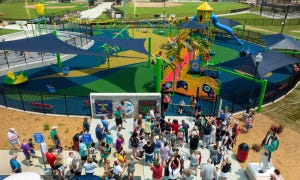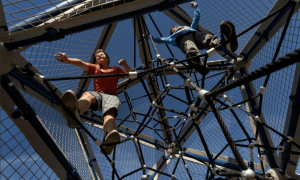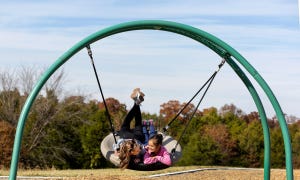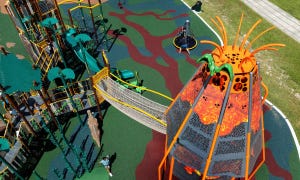Seeing is Believing
This is the first of our three-part installment on Playground Design. You can also read our series on Playground Planning and Playground Funding.
Regardless of when you are reading this post, imagine it is Christmas time and little kids are rushing to see Santa. To actually SEE Santa helps them believe he is real.

We’ve talked about planning your outdoor recreation space. We’ve talked about how to fund it. And now we are at the designing phase, one of the most exciting steps of all. The design step is where you bring together all the feedback you’ve received and create a visual representation that allows the community to SEE the goal, and to build excitement and support around it.
So what does it really take to turn ideas into a unique design? The design process encompasses the views of numerous and varied stakeholders so that numerous and varied opinions and options are considered. Everyone likes to be listened to and to see their idea in the design. As long as you don’t end up with a theme park-sized playground to incorporate all the ideas, you should be good. You’ll be surprised how many elements can be incorporated. You and your team have the opportunity to imagine and to create a playground that is elaborate, unique, whimsical, and inviting while still being affordable, flexible, and dependable. Let imaginations run wild!
Here are some tips to consider while designing:
- Allow for differences in age, interest, and ability.
- Address the play continuum, from free play to guided play to structured play.
- Increase both the range of play behavior and the intensity of physical activity: moving, running, jumping, climbing, crawling, balancing, sliding, swinging, and spinning.
- Make the outdoor playground an outdoor classroom, and incorporate loose parts and art. You really can design the community’s dream!
Go Big or Go Home
Another thing to consider is developing a master plan. A master plan includes designs for both a specific site and a district’s overall vision. This allows stakeholders to gain a deeper understanding of both the context and usage of the play project that is underway. Master planning casts a wide net. It provides an overarching, long-range direction for the community’s play values, strategy, and initiatives. It provides an easy way for everyone involved to analyze all those important details like current assets, usage, playground lifecycle and replacement needs, and relevant management and sustainability budget considerations.
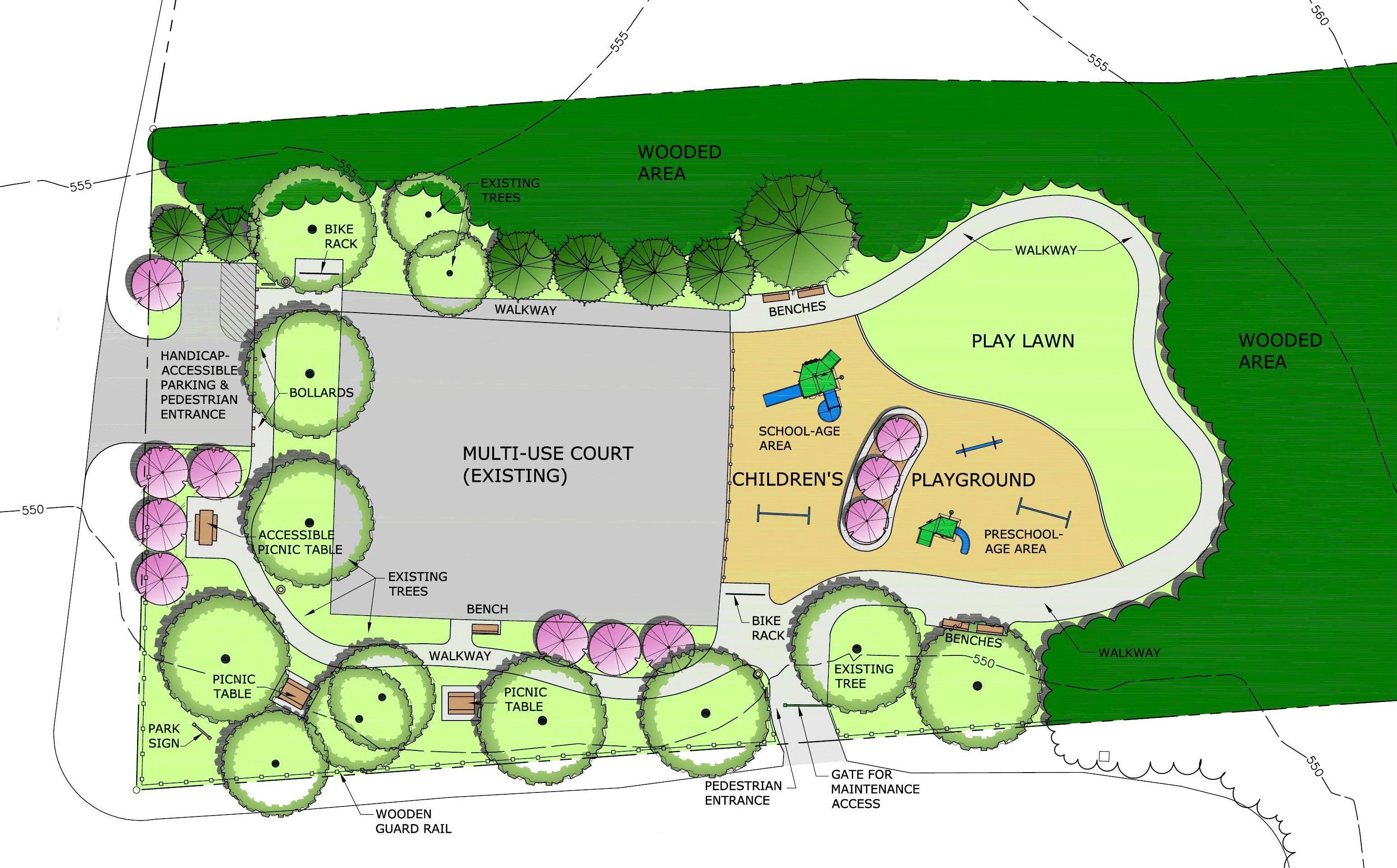
Some urban areas have discovered that having existing compiled data about playgrounds have made their parks eligible for grant funding as they are able to clearly identify the needs and outcomes of such investments - BONUS!!
Let’s take a look at an example. When the City of Denver prepared a Play Area Master Plan, they worked within the larger park and recreation master plan. It addressed the importance of designing adjacent play areas, such as school and park playgrounds that strategically provide maximum community benefits. The plan identified the need for various sizes, play settings, and types of parks that provided users with varying play experiences.
When everyone works together, when more resources are pooled, more goals can be accomplished and budgets can be used more effectively. It’s a no-brainer!
The Denver master planning process included gathering information from the community using surveys and GIS mapping to determine needs, as well as play inequities in various neighborhoods. Pairing this data with a playground audit process, the master plan identified current play spaces in need of updates and potential locations for new play spaces.
Winning Design Visualization
As we all know, vision requires execution to achieve results. So the most critical component of the master plan is the implementation/action plan. As you identify and refine your wish list, and then translate it into a winning visualization, you’ll also be strengthening your fundraising approach. That means you can proceed with confidence!
At the end of the design process, you will have the input from both community and financial stakeholders to give to your playground vendor, so you can work together to create visual tools. These include a top view showing all the play components, a realistic rendering that will generate excitement for the project, and a final cost to help define the fundraising effort required. Use these in your outreach, advertising, grant and fundraising appeals. Use the rendering on posters, social media and any way you can to build awareness! The community will be able to SEE the goal and better understand and support its benefits for the community.
Get your winning design out there watch the magic begin to happen when people start believing!
- Trails (27)
- Schools (193)
- Press Releases (109)
- Playground Funding (5)
- Play Science & Research (62)
- Parks & Recreation (363)
- Outdoor Fitness (138)
- National Demonstration Site (32)
- Landscape Architects (79)
- Inclusive Play (109)
- Daycare and Early Learning (62)
- Custom Play (38)
- College Campus (28)
- Churches (51)
- Challenge Course (30)
- Featured Projects (77)
- BluePrint for Play (18)
- Site and Shade (9)


